Contents
Among other Serbian spruces are distinguished by good resistance to urban conditions, high growth rate. They are often planted in parks and near public buildings. Care for Serbian spruce is simple, and decorative is high. In Our Country, it is easier to grow than the North American species, frost resistance allows you to keep a tree without shelter up to the Urals.

Description of the Serbian spruce
Spruce Serbian omorica is endemic to the valley of the middle reaches of the Drina, grows on the steep northern slopes of Mount Tara at an altitude of 800 to 1600 m. The area covers an area of about 60 hectares and is located in the east of Bosnia and in the western part of Serbia. The culture was discovered and described by the botanist Joseph Pancic in 1875.
Serbian spruce (Picea omorika) is a coniferous plant from the Spruce genus of the Pine family. It reaches a height of up to 30 m, a width of 2,5-4 m, forms a slender tree with a crown in the form of a narrow cone or a column slightly expanding at the bottom. The trunk diameter is up to 1,5 m.
The branches are rather sparse, short, slightly curved in an arc, the ends are raised. Young shoots are brown and hairy, adults are covered with thin reddish-gray scaly bark.
The color of the needles does not change depending on the season. The length of the needles is from 8 to 18 mm, the width is 2 mm. The lower side of the needles is drawn with two light stripes, on the upper side there is a dark green shiny path. The needles of Serbian spruce are prickly, but not as much as in other species.
The culture blooms in May. Male cones are red, female – at first they are painted in red-purple-brown color, then they become brown, shiny. Ripe by August next year. Cones may appear already on a 12-15-year-old tree, they are ovoid-oblong, 3-6 long, rounded, slightly toothed scales. They hang from the ends of the branches and look very attractive. Seeds 2-3 mm long are equipped with a transparent wing of 5-8 mm.
Serbian spruces are better than others adapted to urban conditions, they tolerate gas pollution and smoke in the air well. Shade-tolerant, relatively undemanding to soils. Tolerates low temperatures well. In nature, they live up to 300 years.
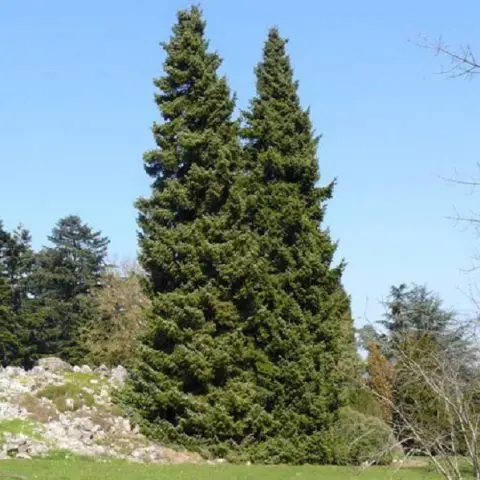
Varieties and types of Serbian spruce
In Europe and Our Country, Serbian spruce grows better and requires less maintenance than the more ornamental species from North America – Prickly and Canadian. A lot of different varieties have been created with a different crown shape, height and some variety in the color of the needles.
Spruce Serbian Aurea
A feature of the Serbian spruce Aurea is its golden needles. But only young needles have this color, by the middle of the season they begin to turn pale, and by the end they acquire the usual gray-green color.
The Aurea variety reaches 10-1,5 m by the age of 3, at 30 it stretches to 10-12 m (in Our Country – about 9 m). The diameter of the Serbian spruce crown at this age is 5 m. The annual growth is 15-30 cm, according to some sources – more.
Short needles up to 2 cm long semi-rigid. In old needles, the upper part is dark green, the lower part is silver. The branches grow close to each other, forming a dense cone. A tall adult tree becomes looser.
Serbian Aurea spruce should be planted in the sun, then the needles retain a golden color longer, and the branches grow densely. If you place it in partial shade, the yellow color will become pale, the crown is sparse. Without access to light, Aurea loses its original color.
This variety tolerates polluted air well, winters in zone 4 without shelter.
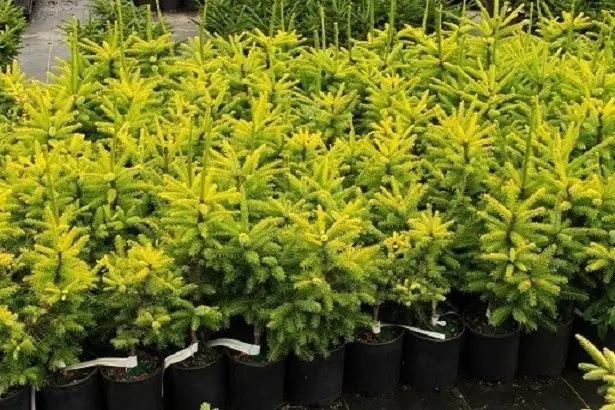
Zuckerhut Serbian Spruce
The name of the variety is translated into as a sugar loaf. Indeed, the Serbian spruce Zuckerhut (Zuckerhut) has a conical crown of the correct shape and belongs to the dwarfs. On sale since 1999, and so far it is not common.
By the age of 10, the Zuckerhut spruce reaches a length of up to 1,5 m with a width of 80 cm. An adult tree after 30 years grows up to 2-2,5 m, the crown diameter is about 1,5 m. These are the maximum sizes, in Our Country Serbian spruce is unlikely will reach them. The annual growth is no more than 15 cm.
The shoots of the Zuckerhut variety are stiff, short, mostly directed upwards, densely covered with needles. At a young age, the crown is somewhat rounded, then it acquires more strict forms. The branches of an adult tree do not become sparse.
The needles of Serbian spruce are blue below, green above, slightly twisted. This creates an interesting effect. The branches of the Zuckerhut variety are raised, and the green color seems to be mixed with silver.
The tree can grow in partial shade or in the open, requires protection from the sun in late February and early spring. Winters without shelter in the fourth zone.
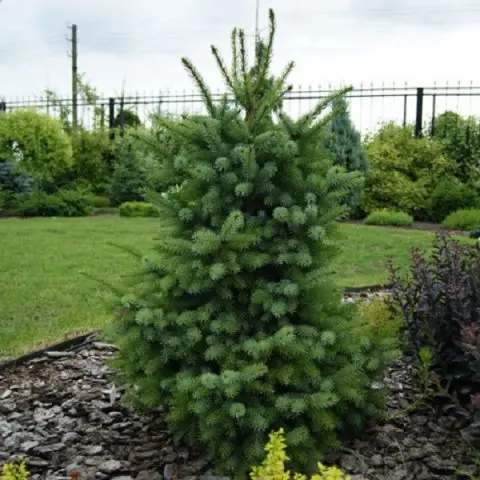
Spruce Serbian Pimoko
The variety of Serbian spruce Pimoko (Pimoko) obtained from the mutation of the witch’s broom was discovered in the early 80s of the XX century. It is very similar to the well-known Nana, but much smaller. The crown is spherical or nest-shaped, reaches a height of 10 cm by the age of 30. Annual growth is uneven, no more than 7 cm.
The branches are short, hard, reddish. They are pressed against each other, poorly pass the sun and moisture, need regular cleaning. But the crown of Pimoko is dense not due to a larger number of shoots, but due to shortened internodes.
The needles are small, dark green above, silver-blue below. The needles stick out in all directions, it seems that Pimoko is painted unevenly.
Resistance to air pollution is high. Serbian Pimoko spruce winters without protection in the 4th frost resistance zone. Can be grown on stem.
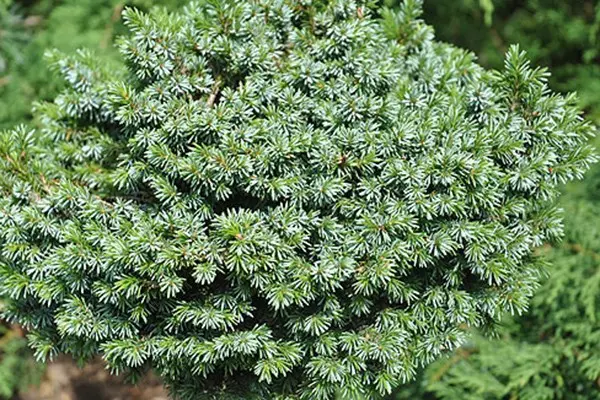
Spruce Serbian Vodan
The result of artificial crossing of Serbian Spruce with the North American Brewer’s Spruce was the dwarf hybrid Wodan. It was created at the beginning of the century in the nursery of Verdun, Germany. The name is given in honor of the supreme god Wodan (Wotan), who is the German analogue of the Scandinavian Odin, better known in Our Country.
Up to 10 years, the variety grows very slowly, annually adds about 5-8 cm, and reaches a height of 60-70 cm with a width at the bottom of up to 50 cm. Then the tree begins to grow rapidly – 15-20 cm each. 30 years are unknown, as the variety is young.
The crown is pyramidal, not too dense. The needles are greenish-blue, short. The resistance to urban conditions is satisfactory. Frost resistance – zone 4, some sources claim that the variety hibernates at -40 ° C.
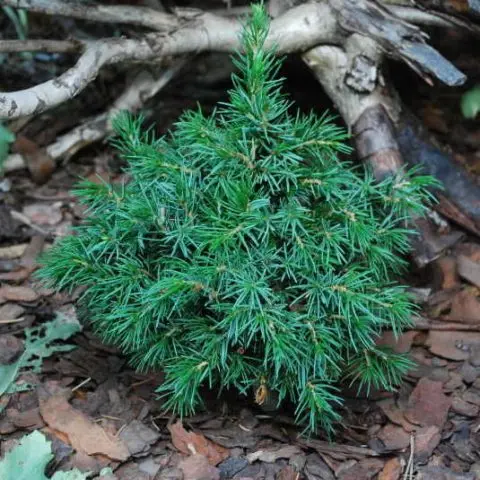
Spruce Serbian Linda
This variety is more popular in Europe. It is difficult to find it in Our Country. Most amateurs who collect a collection of conifers, or who, for some reason, want to get this particular variety, write out Linda from abroad.
Those who love standard-shaped spruces consider this variety to be one of the most beautiful. Linda’s crown is pyramidal, the branches are serpentine, but not enough to call the tree bizarre, the lower ones lie like a skirt on the ground without pruning. Height at 10 years – about 1,5 m, growth – 15 cm per year.
Linda’s needles are bluish below, dark green on the top. Due to the fact that the shoots “flow”, the visual effect is impressive – the color is uneven and invariably draws attention to the tree.
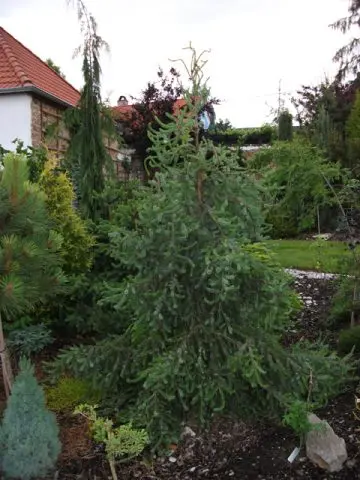
Spruce Serbian Medusa
Perhaps, Medusa is the most exotic variety of Serbian spruce. It is difficult to call it beautiful, rather the word strange is more suitable here. Medusa is rare even in Europe. exotic lovers are forced to prescribe a variety from foreign nurseries.
The height of an adult plant is about 3 m. The branches are arranged irregularly and stick out in different directions. They are quite long, serpentine bend and twist. Moreover, there are few branches, as well as side shoots! The effect is stunning.
The needles are tightly pressed to the shoots, blue-green. Young needles are bluish, lighter.

Serbian spruce Karel
A popular and widespread variety. It is a dwarf evergreen tree by the age of 10 growing up to 60 cm with a width of the same, or a little more. The young needles are light green, turning blue-green by the end of the season.
The crown is cushion-shaped or similar to a hemisphere. Holds its shape well and can do without shaping pruning. Winters without shelter in zone 4.
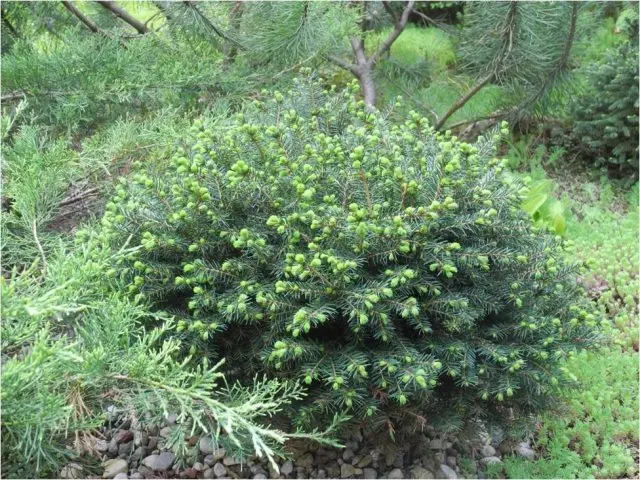
Eat Serbian Nana
One of the most famous varieties. By the age of 10, Nana has a height of 1,5 m, at 30 it stretches up to 4-5 m. In Our Country, the dimensions are more modest. The annual increase in height is 5-15 cm, the width increases by 5 cm.
The young Serbian spruce Nana has a dense, round-ovate crown, the leader is weakly expressed. An adult tree is looser, the shape becomes conical. The needles are blue-green, sparse.
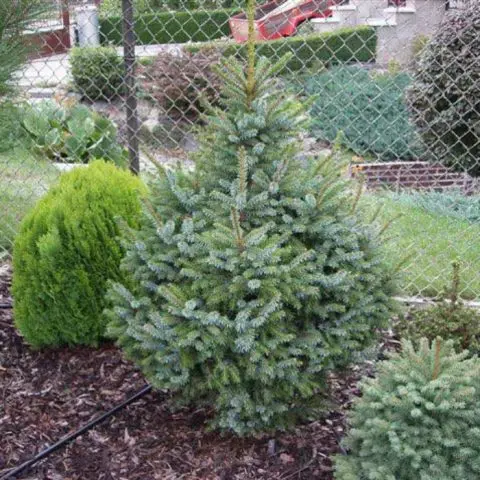
Serbian Pendula spruce
Many experts believe that Pendula is not a separate variety, but the collective name of Serbian fir trees with a drooping crown. All of them reproduce only by grafting and do not have a trunk. Its function is performed by a strong branch, chosen arbitrarily and tied to a support.
It is by the nature of the growth of the central conductor that varieties are distinguished. For example, the description of the Serbian spruce Bruns shows that the tree first stretches up and then begins to bend. And the Cook variety tends to take a horizontal position just above the grafting site.
Unlike other types of Pendula firs, Serbian ones do not need a hard garter. Their branches are strong, and quickly woody. The center conductor bends but does not rest on the ground. The shoots descend close to the trunk and form an impenetrable curtain. The needles are blue-green.
The annual growth depends on the variety, on average it is 15-20 cm per year. The height is determined by whether the tree is tied and how much the loose center conductor bends. It is more convenient to talk about the length of the leader, and after 30 years it can be 10-15 m.
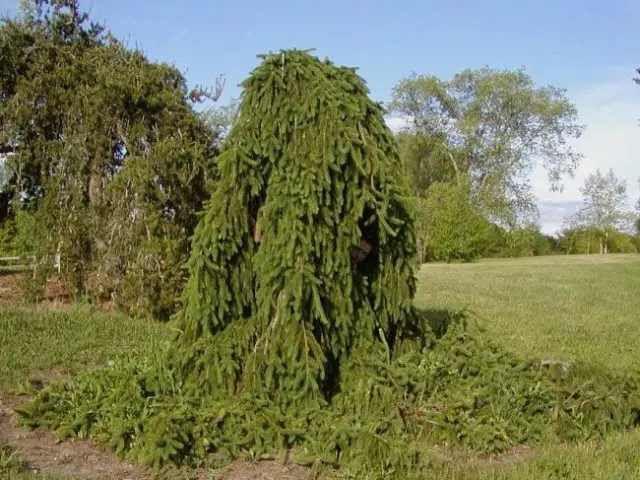
Serbian spruce in landscape design
In Our Country, Serbian spruces are often used in landscape design. They are more suitable for growing in urban environments than others and require minimal care. A variety of varieties allows the use of culture in different compositions:
- Serbian spruce Bruns and other Pendulas will make a great vertical accent when tied hard, or a fantastically shaped whimsical tree when grown loose;
- dwarf varieties Karel, Pimoko and Wodan can be placed in rockeries, rock gardens and flower beds;
- Aurea attracts the eye with an unusual golden color of the crown;
- Zuckerhut and Linda can be planted in the stalls, and decorated with toys and garlands for the New Year;
- Medusa is like an alien among conifers, and will suit people who want to capture the imagination of others;
- forms with a narrow, sky-like arrow can be planted as an alley or vertical accent in large and small tree groups.
Neighbors of Serbian spruces can be any crops that require regular, plentiful, but rare watering and prefer acidic soil.
Photo of Serbian spruce in landscape design
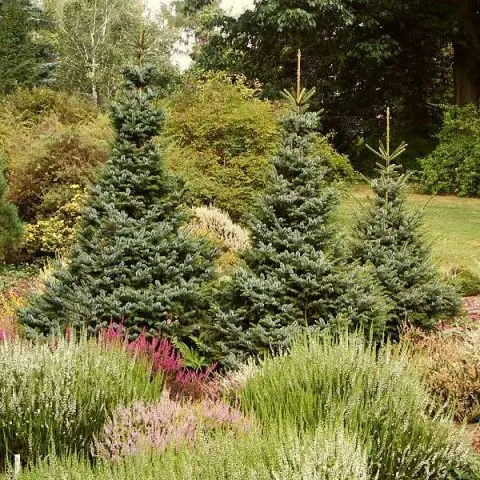
Planting and caring for Serbian spruce
Caring for Serbian spruces is not difficult, but should be regular. Any novice gardener can handle it without outside help. If you leave the plant unattended for a long time, it will start to hurt and lose its decorative effect. In the worst case, the tree will die.
Seedling and planting preparation
Serbian spruce is planted in an open sunny place. It withstands partial shade well, but if there is not enough light, the crown becomes loose, and in the Aurea variety, the needles turn pale. The soil should be loose, permeable to water and air, acidic or slightly acidic. The species tolerates anthropogenic air pollution well.
If there is a choice, seedlings should be taken from local nurseries. Imported spruces must be in a container. Locals can be bought with an earthen clod lined with burlap. Serbian spruces with an open root are unlikely to take root. The needles should be fresh and elastic, even the browned tips of the needles are a sign of trouble.
Rules for planting Serbian spruce
The landing pit is prepared at least 2 weeks in advance. It is not necessary to change the soil in it completely:
- for looseness and improvement of the structure, leaf humus and soddy soil are added to the substrate;
- acidity is brought back to normal with the help of high-moor peat;
- clay is added to too light sandstones.
The root neck during planting should remain at ground level. As the pit falls asleep, the substrate is compacted so that voids do not form. After planting, the tree is watered abundantly, and the soil is mulched.
Watering and top dressing
Serbian spruce is often watered immediately after planting, for about 2-4 weeks. Then the soil is moistened rarely, but plentifully, for each small tree you need at least 10 liters of water. Adults water so that for every linear meter of growth there is a bucket of liquid. In warm weather, crown sprinkling is necessary.
Top dressing root and foliar make special fertilizers for coniferous crops.
Mulching and loosening
The soil under Serbian spruces is loosened only in the first 2 years after planting. Then, in order not to injure the roots that are close to the surface, they only mulch. It is better to use acidic peat or pine bark.
Trimming
Serbian spruces do not usually need shaping pruning, but they tolerate shearing well. Dry and broken branches require regular removal during sanitary measures.
Crown cleaning
In large trees and Serbian firs with a sparse crown, crown cleaning is quick and unnoticeable among other sanitary measures. Particular attention should be paid to dwarf varieties with a dense crown – without access to light, with poor ventilation close to the trunk, the needles and twigs dry quickly, dust collects, and spider mites start up.
Cleaning is carried out annually, and then the plant and the area under it are treated with a fungicide containing copper.
Sun protection
At the end of winter and early spring, the needles quickly evaporate moisture, and the root, located in the frozen ground, cannot replenish it. Trees up to 10 years of age, dwarf forms and the Aurea variety are especially affected. When the weather is sunny, the trees should be covered with burlap or white non-woven material until they start to grow.
Preparation for winter
Most varieties of Serbian spruce winter well without shelter in zone 4. Newly planted trees need to be protected in the first year or two, then limited to mulching.
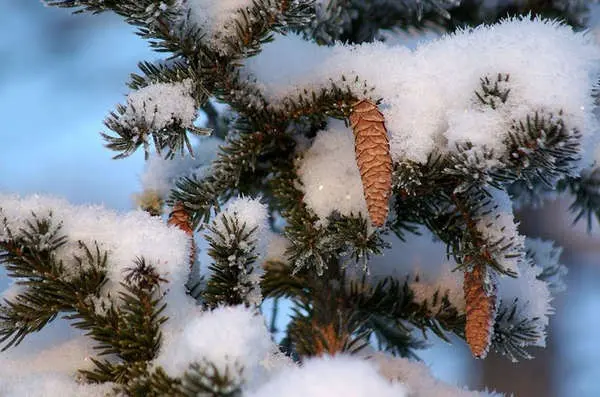
How fast Serbian spruce grows
Serbian spruce grows faster than other species. Most varieties add 15-20 cm per season. Dwarf varieties grow a little slower.
Reproduction
Serbian spruces, depending on the variety, breed:
- Forms that are close to the species plant and give cones can be propagated by seeds. In order to preserve the variety, the culling of seedlings that are unlike the parental form begins from the first year of life. Usually the yield of quality plants does not exceed 20-50%. From the moment of emergence of seedlings to transplanting to a permanent place, 4-5 years pass.
- Most Serbian firs can be propagated from cuttings. Experts take them all year round, amateurs are advised to root in the spring. There are a lot of attacks even with professional breeding.
- Weeping forms are bred exclusively by grafting. For amateurs, this operation is not within the power. Even domestic nurseries are only mastering it, and are not able to saturate the market.
Diseases and pests
Serbian spruce has good health and is rarely attacked by pests. But only if the tree is regularly looked after, watered in time, fed and preventive treatments are carried out.
The culture is often affected in the absence of sprinkling of the crown with a spider mite. If the needles are moistened late in the evening, and it does not have time to dry, a mealybug may appear in a warm climate. Other pests are introduced from infected plants. During the years of epizootics (mass reproduction of one or another insect), all cultures suffer.
Among the diseases, one should separately note the rot that occurs during overflows, especially on dense soils, and the shute, which affects for the most part the branches lying on the ground. Infection from tree to tree can be spread with dirty hands.
Diseases are controlled with fungicides, pests are destroyed with insecticides.
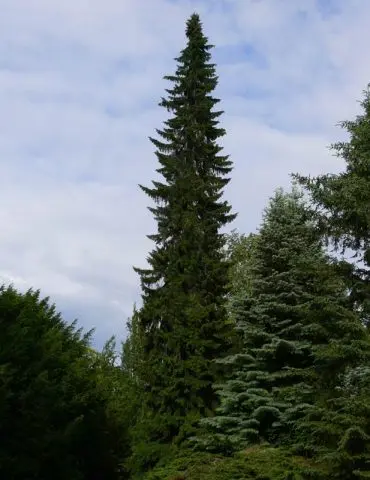
Conclusion
Caring for Serbian spruce is not difficult, but should be regular. This beautiful, healthy coniferous culture grows well in Our Country and neighboring countries. On the basis of Serbian spruce, various, different varieties have been created that can satisfy every taste.









